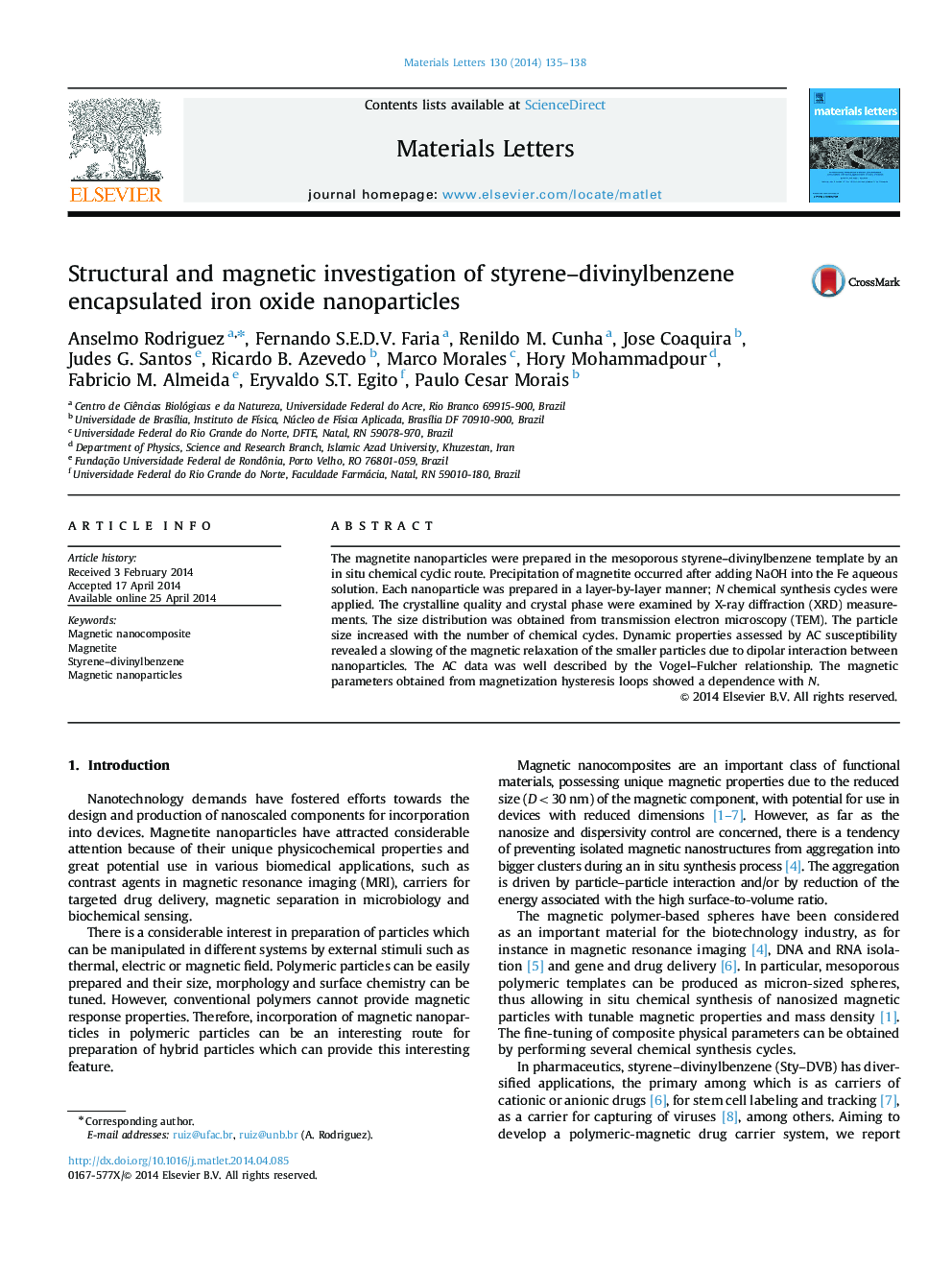| Article ID | Journal | Published Year | Pages | File Type |
|---|---|---|---|---|
| 1643829 | Materials Letters | 2014 | 4 Pages |
•Magnetite nanoparticles were prepared by the porous styrene–divinylbenzene beads.•The chemical synthesis was performed N times to obtain the N-cycle composite.•Saturation magnetization and the coercive field increases with N.
The magnetite nanoparticles were prepared in the mesoporous styrene–divinylbenzene template by an in situ chemical cyclic route. Precipitation of magnetite occurred after adding NaOH into the Fe aqueous solution. Each nanoparticle was prepared in a layer-by-layer manner; N chemical synthesis cycles were applied. The crystalline quality and crystal phase were examined by X-ray diffraction (XRD) measurements. The size distribution was obtained from transmission electron microscopy (TEM). The particle size increased with the number of chemical cycles. Dynamic properties assessed by AC susceptibility revealed a slowing of the magnetic relaxation of the smaller particles due to dipolar interaction between nanoparticles. The AC data was well described by the Vogel–Fulcher relationship. The magnetic parameters obtained from magnetization hysteresis loops showed a dependence with N.
Graphical abstractFigure optionsDownload full-size imageDownload as PowerPoint slide
